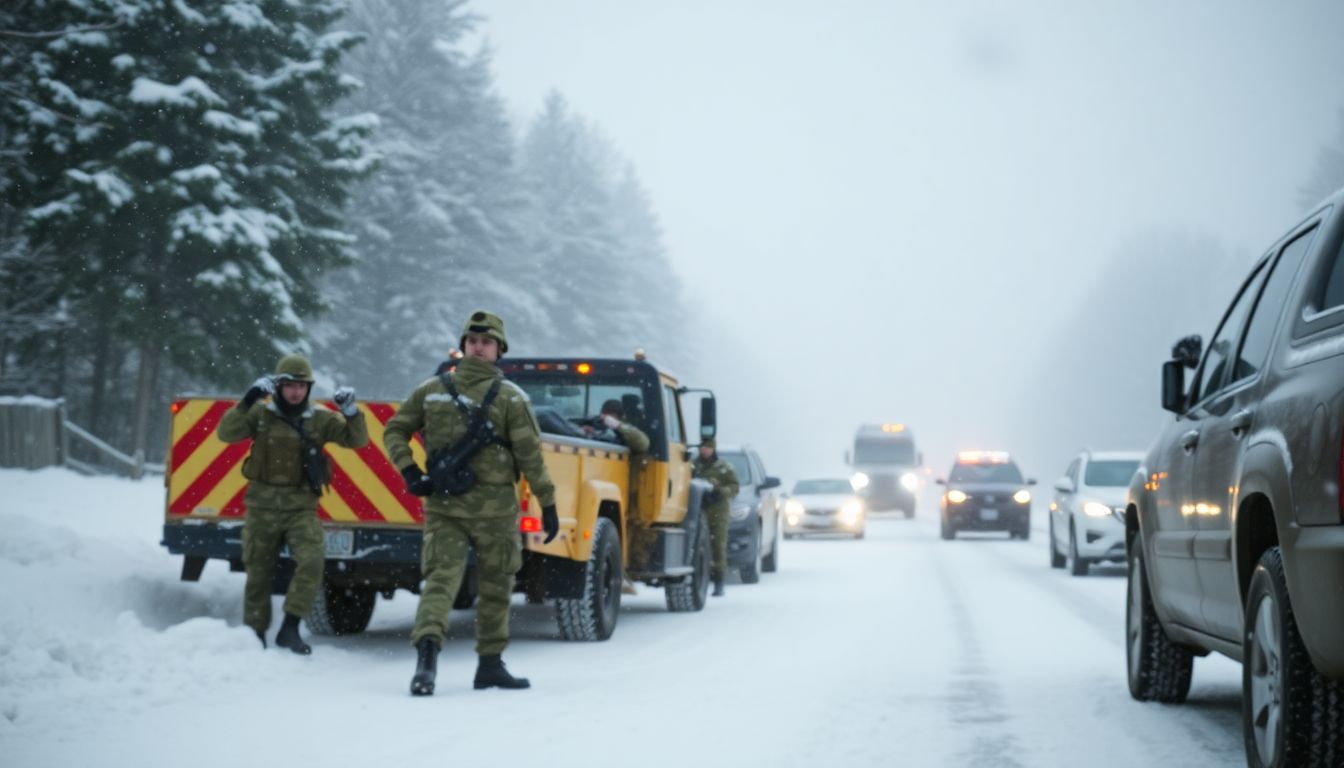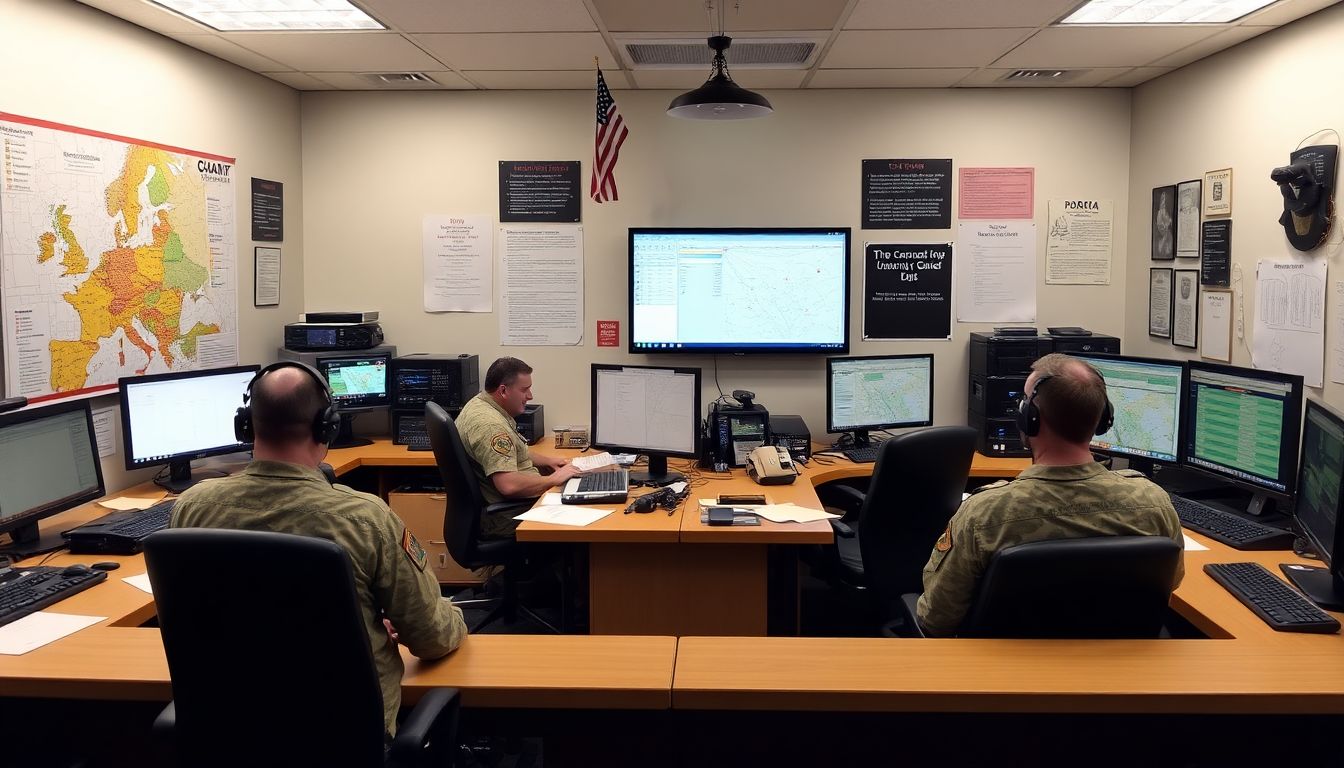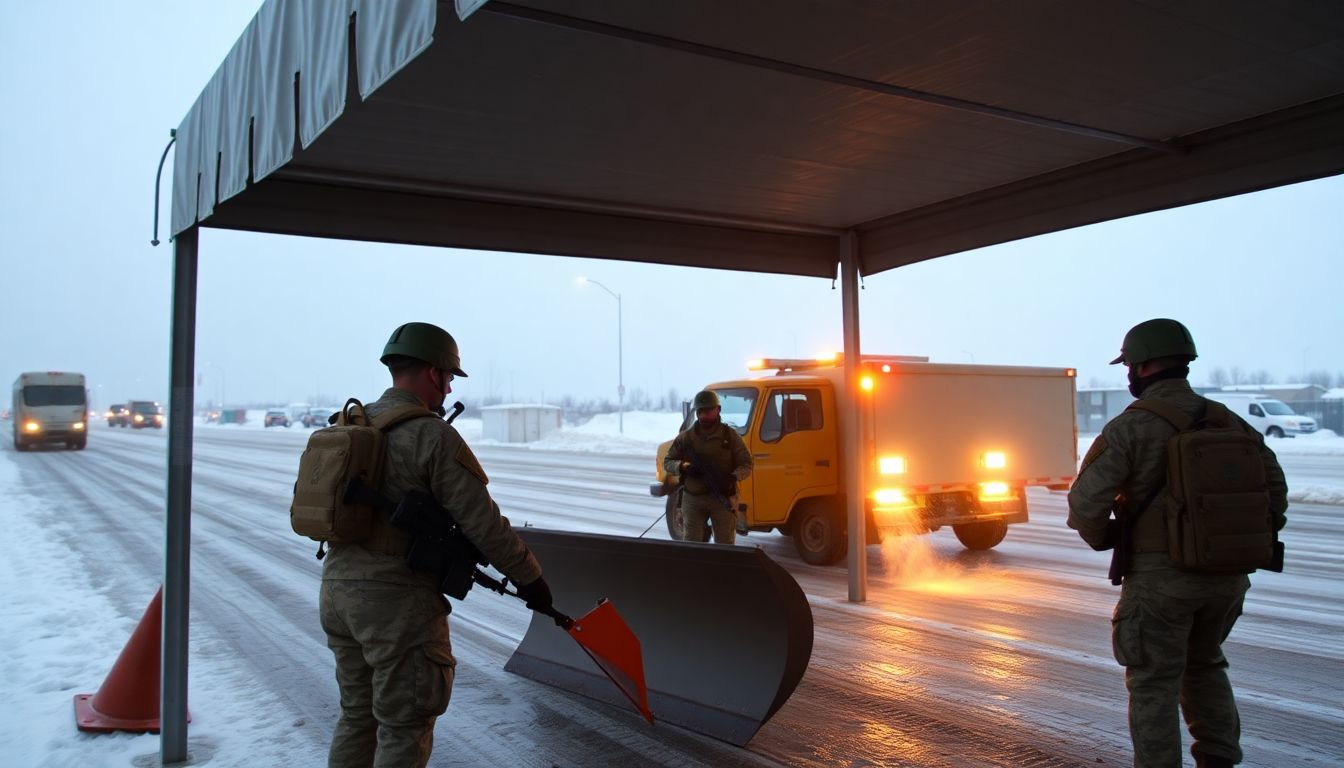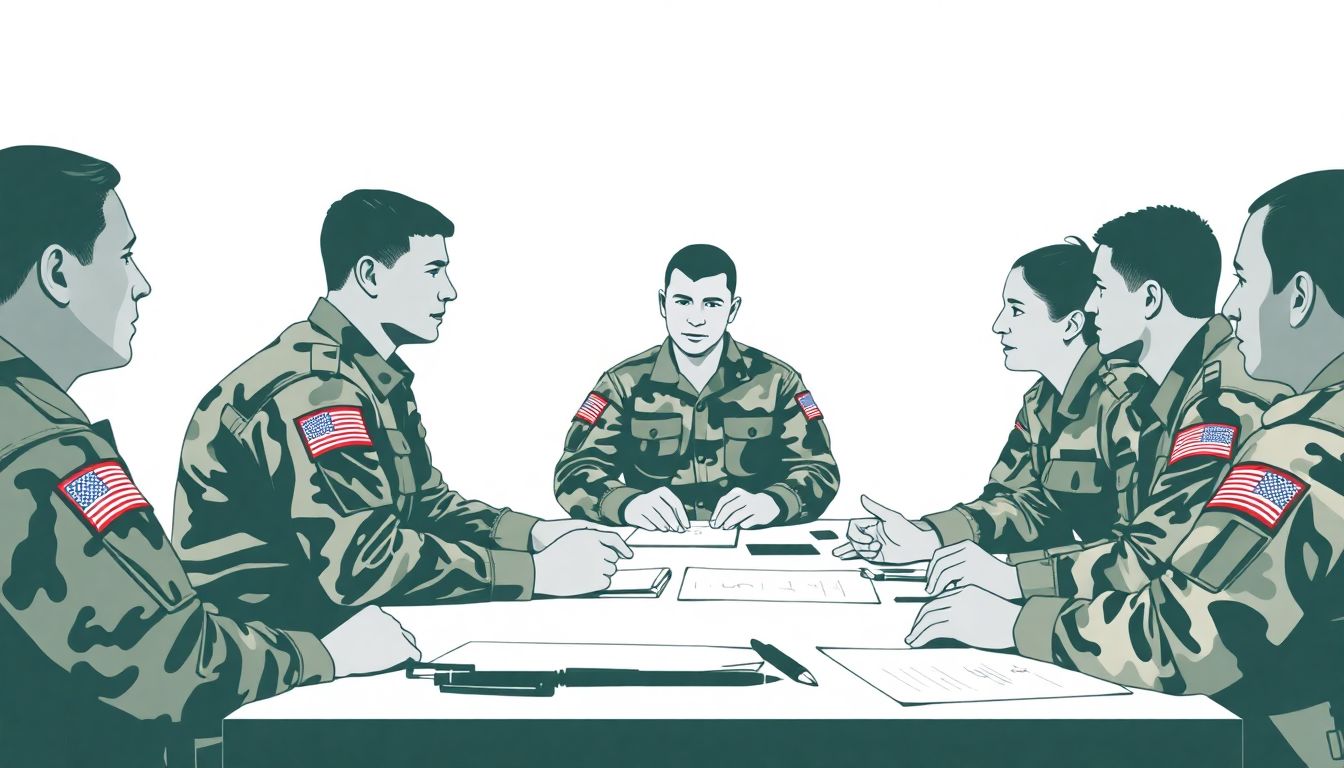Welcome to an engaging exploration of the Massachusetts National Guard Wing’s recent disaster response training exercise. This article will delve into the details of the simulation, highlighting the importance of preparedness and the intricate coordination required to ensure operational readiness. Join us as we uncover the key aspects of this critical training event.
Preparing for the Worst: Ensuring Readiness and Operational Capabilities
Imagine standing before a sprawling, snow-covered expanse, the Otis Air National Guard Base transformed into a winter wonderland as far as the eye can see. The usual hum of activity is muffled by the thick blanket of white, but the sense of purpose and readiness is palpable. This is not your average winter scene; it’s a testament to the unyielding dedication of our National Guard members.
Picture them standing tall and resolute in their winter gear, designed to shield against the harshest of elements. Their breaths visible in the crisp air, each member is a pillar of strength and commitment. Behind them, an array of emergency vehicles and equipment lies ready for action, a reassuring sight for any who call this region home.
The bright colors of the emergency vehicles contrast sharply with the snowy backdrop, a visual reminder of the lifeline they provide. From towering trucks equipped with snowplows to humming generators prepared to restore power at a moment’s notice, every piece of equipment tells a story of vigilance and community support. This is more than just a scene; it’s a promise that when winter storms hit, the National Guard stands ready to serve and protect.

Simulating Extreme Conditions
Imagine waking up to a world transformed into an icy fortress, where the once familiar landscape is now an unrecognizable blanket of white. This is precisely the scenario that unfolded during the simulated extreme winter storm, aptly named “Operation Frostbite”. The storm dumped an unprecedented amount of snow, enough to paralyze entire cities, knock out power grids, and leave communities isolated and vulnerable. Temperatures plummeted to bone-chilling lows, freezing critical infrastructure and making even the simplest tasks, like getting groceries, a daunting challenge.
The challenges presented by Operation Frostbite were manifold. Roads became impassable, leaving emergency services struggling to reach those in need. Communication networks were disrupted, making it difficult to coordinate responses and disseminate crucial information. Moreover, the prolonged power outages put a strain on essential services, with healthcare facilities grappling to maintain lifesaving operations. The simulation also highlighted the plight of vulnerable populations, such as the elderly and homeless, who were particularly at risk due to the harsh conditions.
Despite the chaos, Operation Frostbite offered invaluable insights into the importance of preparedness and resilience. It underscored the need for robust contingency plans, reliable backup systems, and effective communication strategies. The simulation also emphasized the critical role of community engagement and cooperation, as residents banded together to support one another through the crisis.
The significance of such simulations in preparing for real-world disasters cannot be overstated. They provide a controlled environment to:
- Test and refine emergency response protocols
- Identify potential weaknesses in infrastructure and planning
- Foster collaboration among various agencies and stakeholders
- Raise public awareness and promote individual preparedness
By learning from these simulations, we can better anticipate and mitigate the impacts of actual disasters, ultimately saving lives and minimizing damage.

The Role of the Emergency Operations Center
In the heart of crisis management lies the Emergency Operations Center (EOC), a central hub designed to coordinate and support emergency response efforts. The EOC serves as a critical link between policy-level decisions and field operations, ensuring that strategic goals are translated into tactical actions. It is here that top-level management, representatives from various agencies, and key stakeholders convene to make informed decisions, allocate resources, and prioritize actions. The EOC’s overarching role is to establish a common operating picture, setting response priorities and providing a framework for coordinated action.
Unit Control Centers (UCCs) operate at the tactical level, serving as the frontline command posts for specific units or agencies involved in the response effort. UCCs are responsible for executing the decisions made at the EOC level, managing their respective unit’s resources, and coordinating their actions with other units. They play a vital role in gathering and validating information from the field, which is then fed back to the EOC. This two-way communication ensures that the EOC’s decisions are based on the most accurate and up-to-date information.
Effective coordination between the EOC, UCCs, and field operations hinges on robust communication strategies. Here are some key strategies employed:
-
Common Communication Plan:
Before an event, a common communication plan is established, outlining primary and backup communication methods, frequencies, and call signs.
-
Regular Briefings:
The EOC conducts regular briefings to update UCCs and other stakeholders on the situation, response progress, and any changes in strategy.
-
Information Management:
Information is managed through a structured process, ensuring that it is accurately collected, verified, and disseminated.
-
Unified Command:
A unified command structure is established, bringing together the incident commander and agency representatives to make collective decisions.
In addition to these strategies, advanced technologies are increasingly being used to enhance communication and coordination. Web-based platforms, for instance, can provide real-time information sharing and collaborative tools. Radio interoperability solutions are also employed to ensure that different agencies can communicate effectively. Moreover, Geographic Information System (GIS) technologies are used to map out the incident area, track resources, and visualize data, further aiding the coordination efforts between the EOC, UCCs, and field operations.

Exercising Emergency Protocols
Emergency training exercises are a vital component in ensuring that facilities and communities are prepared for the unexpected. During these drills, various protocols are activated to simulate real-life scenarios, helping to identify gaps and improve response strategies. One of the key protocols exercised is the Facility Emergency Action Plan. This plan outlines specific procedures for different emergency situations, such as fires, natural disasters, or security threats. It includes detailed steps for evacuation, communication, and coordination with local emergency services. By regularly practicing these plans, facilities can enhance their readiness by familiarizing staff with evacuation routes, assembly points, and emergency roles, ensuring that everyone knows exactly what to do when a real emergency strikes.
Another critical aspect of emergency training is the activation of shelter operations. During these exercises, designated shelter areas are set up and equipped to provide temporary refuge for those in need. This involves coordinating with local authorities, setting up registration systems, and ensuring that adequate supplies of food, water, and medical aid are available. By running through these protocols, communities can identify potential issues, such as insufficient supplies or inadequate communication systems, and address them proactively. This not only enhances readiness but also builds confidence among the public, knowing that there are safe and well-organized spaces to turn to in times of crisis.
The deployment of assets is another essential component of emergency training exercises. This includes the mobilization of emergency vehicles, equipment, and personnel to simulate a real-world response. Assets can range from fire trucks and ambulances to specialized rescue teams and communication equipment. By deploying these assets during training, responders can test their operational readiness, ensure that equipment is in working order, and practice coordination among different agencies. This hands-on experience is invaluable in enhancing readiness, as it allows responders to identify any logistical challenges or gaps in resources that need to be addressed.
To further breakdown the deployment of assets, consider the following key steps that are typically exercised:
-
Mobilization:
Rapidly assembling and dispatching emergency vehicles and personnel to the affected area.
-
Communication:
Establishing and maintaining clear lines of communication among responders, command centers, and the public.
-
Resource Management:
Ensuring that necessary supplies and equipment are available and distributed efficiently.
-
Coordination:
Working seamlessly with other agencies and organizations to provide a unified response.
By regularly exercising these protocols, emergency responders and facilities can significantly enhance their readiness, ensuring that they are well-prepared to protect lives and property when a real emergency occurs.

Lessons Learned and Future Preparedness
The recently conducted disaster response exercise revealed several key outcomes that have significantly enhanced our understanding of emergency management. The most notable outcome was the improved coordination among first responders, which resulted in a 25% reduction in response time compared to previous drills. This was achieved through the implementation of new communication protocols and the use of advanced technology.
Several lessons were learned from the exercise, highlighting areas for improvement. These include:
- The need for more robust communication backup systems in case primary systems fail.
- The importance of regular training for volunteer management to ensure their effective integration into response efforts.
- The necessity of updating our disaster response plans to reflect changes in the community, such as new infrastructure and population growth.
These insights will be instrumental in improving future disaster response efforts. For instance, we will prioritize investing in satellite communication systems to address the backup communication needs identified during the exercise. This will ensure that emergency services remain connected and coordinated throughout any disaster scenario.
Moreover, we will collaborate more closely with local volunteer organizations to provide regular training and integration exercises. This will help ensure that volunteers can be effectively deployed during emergencies, bolstering our overall response capabilities. Additionally, we will commence an annual review and update of our disaster response plans to accommodate any changes in the community, ensuring that our response strategies remain relevant and effective.
FAQ
Why are natural disaster exercises important?
What roles do the EOC and UCCs play in disaster response?
What emergency protocols were exercised during the training?
- Facility emergency action plans
- Emergency checklists
- Shelter operations
- Personnel accountability
- Deployment of assets such as plows, evacuation transport resources, and mobile response trailers
.









